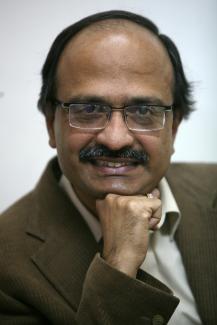Nowadays
Take the poo to the loo

In rural areas, two thirds of the people have no access to a toilet, and in cities the share is 13 %. The consequences of open defecation include diarrhoea, other water-borne diseases as well as limited growth and development of children. The World Bank estimates that poor sanitation costs India about $ 54 billion a year in terms of medical treatment and lost productivity. Manual scavenging – the practice of humans removing waste – is officially banned, but still prevalent in some parts of the country.
The previous Congress-led government launched a Total Sanitation Campaign to end the practice of open defecation by 2022, but progress has been slow so far. “At the current rate of progress, India will achieve the sanitation target set under the UN’s Millennium Development Goals only in 2054,” estimates UNICEF India. The agency wants to speed up matters and has launched an awareness-raising campaign called “Take the poo to the loo”.
Constructing millions of toilets in villages and in urban slums is a huge challenge. Providing all rural people with western-style personal toilets, moreover, would require large investments in waste-water pipes and treatment facilities. Affordability and sustainability are obviously key issues in a poor country. The good news is that well-designed pit latrines and other appropriate technologies are viable solutions.
The national government’s Department of Biotechnology has organised a contest for Indian researchers to come up with new ideas for toilets that use less water and systems for local treatment. The six best proposals will be awarded grants to build and test prototypes of “next generation toilets”. The government and the Bill and Melinda Gates Foundation have promised to make $ 2 million available for that purpose.
There is no lack of ideas. Eram Scientific Solutions is a company based in Kerala, a south Indian state. It wants to conduct field trials of a self-sustaining, solar-operated modular toilet with an onsite biological treatment system. The Mumbai-based Institute of Chemical Technology believes it can develop a water-free, odor-less and insect-free toilet. Other innovators are entering the race as well.
Whether such toilets will convince users remains to be seen however. Changing the attitudes of people who are used to open defecation is a serious challenge. UNICEF points out, that building toilets won’t do: “People must want to use a toilet; they must want to stop open defecation.” Raising awareness of health risks is important, but insufficient to make people change their behaviour. The essential thing is to win over entire communities, so convincing their leaders of the benefits of toilets is probably the key challenge.
Providing 620 million people with toilets and getting them to use the new facilities is an enormous task. An expert from the Gates Foundation says this goal is “as ambitious as going to the moon or Mars”.
Dinesh C. Sharma is a journalist and columnist based In New Delhi. dineshcsharma@gmail.com









